Building Better Questions: What I Learned from LEGO® SERIOUS PLAY® and Michael Brown

“How Hands-On Creativity Unlocks The Building Deeper Thinking, Clearer Communication, and Collaborative Solutions”
I recently had the privilege of sitting down with Michael Brown, a gifted facilitator and the mind behind an innovative presentation approach called LEGO® SERIOUS PLAY®. What I thought might be a fun, hands-on activity turned out to be a deep dive into cognitive development, communication, and creative problem-solving. Michael didn’t just explain how the process works — he walked me through why it matters.
The Power of the Brick
At the heart of LEGO® SERIOUS PLAY® is a deceptively simple concept: instead of answering questions with words, participants build their answers using LEGO bricks. But this isn’t just playful experimentation — it’s profound neuroscience in action. By engaging the hands, the process taps into areas of the brain connected to memory, emotion, spatial awareness, and metaphor. The genius of the method is that it bypasses typical communication roadblocks — fear of being wrong, workplace hierarchy, overthinking, or the pressure to sound “smart” — and allows people to construct meaning with their hands in a safe, creative space. And that changes everything.
When people build, they slow down. They reflect. They connect dots that language alone can’t reach. Instead of filtering or censoring themselves, they begin to think with clarity and speak with authenticity. The act of building shifts focus from performance to process — from judgment to curiosity. A quiet team member who might normally stay silent in a meeting now has a literal centerpiece in front of them to describe. Their story gets seen. Their insight gets heard. Their contribution becomes essential.
It’s in these moments — when a team stops “talking at” and starts building with — that breakthrough happens. Conflict becomes conversation. Stuckness becomes creativity. And most importantly, answers come not from the loudest voice in the room, but from the collective intelligence of the group — one brick at a time.
Everyone Gets a Voice
One of the most compelling things Michael shared was how LEGO® SERIOUS PLAY® creates an even playing field. The CEO and the janitor sit side by side, both with bricks in hand, and both with an equal opportunity to build and speak. The process doesn’t privilege job title or speaking ability — it privileges insight. It democratizes contribution.
As Michael put it, “You’re not answering the question directly. You’re tricking the brain — you’re building the answer. And then you’re explaining what you built, which becomes the answer.”
A Session in Motion
Here’s how it unfolds:
- Pre-Meeting Discovery:
Before anything gets built, a session begins with a conversation. What are the real questions the organization needs answered? This discovery phase is crucial. You don’t just show up and dump your questions on the table — you clarify purpose, identify pain points, and define desired outcomes. - Familiarization with Materials:
Participants start by playing with the bricks to get comfortable. This tactile engagement activates parts of the brain often dormant in boardroom settings — the parts tied to memory, association, and spatial thinking. - Simplified Questions:
The facilitator poses easier, more surface-level questions to start — not just to warm up hands, but to warm up minds. These small builds build confidence. - Core Questions:
Then comes the heart of the experience. Questions like:
– How can we teach our students better?
– What does meaningful student-teacher interaction look like?
– What kind of school culture do we want to create together? These aren’t multiple-choice prompts — they’re invitations to reflect, dream, and design. And participants respond not with speeches, but with structures. - Sharing and Wrap-Up:
Each person explains what they built and what it represents. This act of storytelling through metaphor leads to deeper discussion, unexpected connections, and shared vision.
What People Take Away
Internally:
Participants often walk away with a stronger sense of self-awareness and clarity. Because the activity requires personal interpretation and creative decision-making, it helps people access their intuitive intelligence — the kind that doesn’t always come through in meetings or spreadsheets. They begin to understand what they really think and feel, often in real time.
Externally:
There’s a tangible shift in team dynamics. Listening becomes more active. Hierarchies fade. Empathy increases. People begin to see their coworkers (and even themselves) in a new light. The room, once divided by roles or egos, begins to operate with more cohesion. Collaboration grows not because of instruction, but because of interaction.
Cognitively:
This method engages both hemispheres of the brain. The logical and verbal brain collaborates with the creative and spatial brain. That’s why it works so well with learners of all types — visual, tactile, abstract, and practical. People retain more because they’re not just hearing the information — they’re building it, seeing it, holding it, and sharing it.
Final Thoughts:
My conversation with Michael Brown reminded me that sometimes, the answers we’re looking for aren’t hiding behind better data — they’re waiting to be built, shared, and seen.
LEGO® SERIOUS PLAY® isn’t just about having fun with blocks. It’s about accessing deeper truths, unlocking brainpower, and creating a space where everyone’s voice builds the bigger picture.
And the best part? You don’t have to be a speaker to speak. You don’t have to be an artist to create.
You just have to start with the right questions… and let your hands do the rest.
Table of Contents



